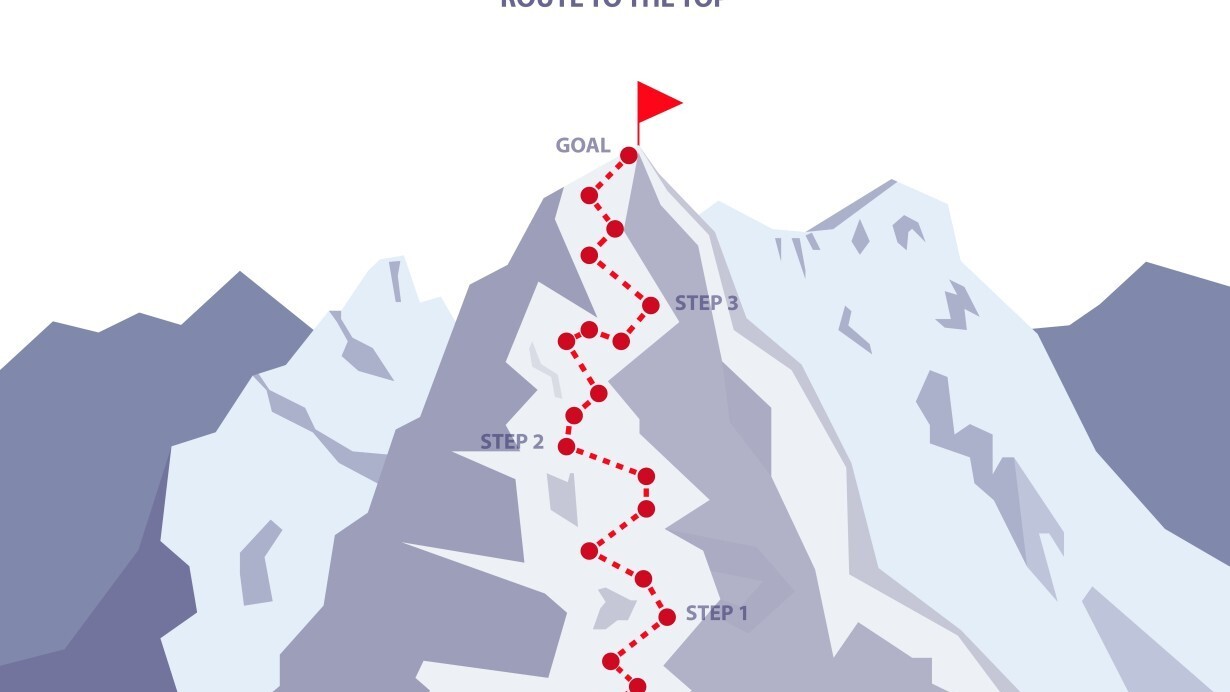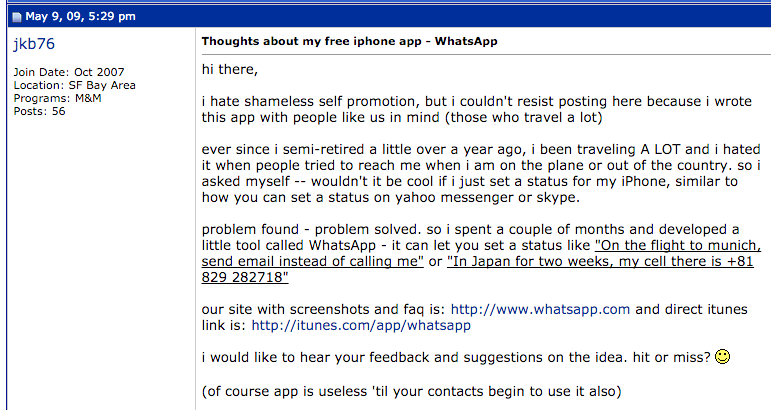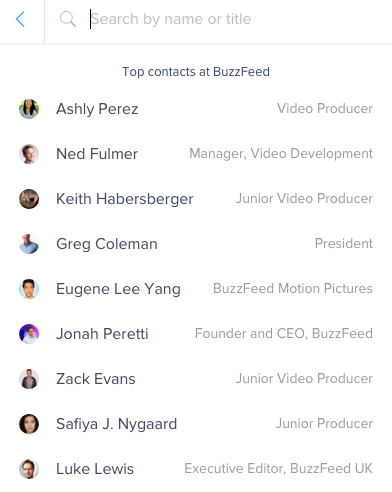
With the advent and proliferation of “growth hacking”, many products are launching with hopes of leveraging data, A/B tests, and viral loops to manufacture a hockey stick growth curve.
It’s easy to think you can growth hack your way into an overnight success, but in practice it rarely works out that way.
Instead, it looks more like this in the early days/months/years:
Startups take off because the founders make them take off. A good metaphor would be the cranks that car engines had before they got electric starters. Once the engine was going, it would keep going, but there was a separate and laborious process to get it going. — Paul Graham
Clever growth tactics can be highly effective in the way that gasoline can be effective when building a fire, not in the way that kindling and dry leaves can.
You wouldn’t dump fuel on a pile of wet wood and expect it to flare up — and similarly a perfect viral loop won’t do much for you if nobody cares about your product in the first place.
Getting those first users and customers takes hustle, not hacking. You need to get out into the world and connect with the people who will help you learn whether you’ve built a product they want, and help you hone in on the right features and functionality.
In addition to being mostly ineffective, driving growth too early can actually be damaging. Austen Allred explains this in his post, Growth Hacking is Dangerous:
But more importantly, growth hacking can cover up all your other sins. Specifically, you can drive enough traffic that you (temporarily) get away with having a crappy product. At that point you’re building a pretty veneer on a shaky foundation.
So, do you manually create momentum and use it to create the right product? It’s actually quite simple:
- Find some users
- Talk to them, understand them, and adjust your product to make them happy
- Repeat
The first few times through that cycle, the scale is small enough that you can make it happen without doing anything too expensive or clever. It just takes a bit of humility and hustle.
When Pinterest was at this stage, Ben Silbermann walked into his local Apple Store and set the homepage on all the computers to pinterest.com. Ryan Hoover just emailed a bunch of his friends and immediately had the foundation for the Product Hunt community.
But if security is tight at the Apple Store in your town, and you’re not as connected as Ryan Hoover was, you can still land those early users. It’s just going to take some hustle.
Here are some ways to get started:
Make a plan
You can make huge progress if you just know three things: who you want to reach, what message will resonate with them, and how to reach them.
Let’s walk through it:

Who do you want to reach?
Every product solves a problem for some subset of the population, and at the start you’re likely better off the smaller that subset is. So, instead of thinking about the big picture of your product being loved by billions of people, think about the first hundred who will love it.
Where do they work? Where do they live? What are they interested in? How old are they? Where do they gather together online? What are their opinions of the world?
As you start answering these questions, you’ll get closer to a profile of your target user.
What message will resonate with them?
Once you know who you need to reach, you can start thinking about how to position your product as a solution to their problem. It’s best to start with the way people are solving this problem today, and consider the ways you can do better.
Is your solution cheaper? Faster? More reliable? Easier to use?
Pick a couple of these and run with them, and iterate as you go.
Now, the harder part:
How can you reach them?
The good news is it’s easier to reach a targeted group of people today than it has been at any point in history. Depending on who you need to reach, there are lots of approaches that might work (remember the Apple Store idea above?). Here are some surprisingly effective ways to do it:
Forums
If the problem your product solves is sufficiently tangible, you should be able to find people in online forums complaining about it and asking for solutions — or just talking about tangentially related issues.
If you’re a subject-matter expert in the space you’re working in, you should be able to chime into these conversations in a way that is actually helpful or interesting beyond your pitch. If you’re adding value to the conversation, you can get away with some promotion from time to time.
This is how WhatsApp founder Jan Koum got the word out initially for an app that ultimately got acquired for $19 billion:

Your comment on a forum isn’t going to get massive traffic, but if your product is relevant to the audience of that particular forum, you should reach at least a few early users — and that’s all you need at this stage.
The best tools:
Industry/interest-specific forums (e.g. FlyerTalk, Hacker News)
Social media
Many people regularly use social media to share their interests, complaints about existing products, and things they like. Social media spambots are rarely successful, but if you’re willing to put in the time/hustle there are huge opportunities.
First you need to find the right people to engage with.
On Twitter, you can do this by searching for relevant terms and hashtags. Tweetdeck is a great tool for maintaining dozens of ongoing searches:
Lots of people get this far, but then they end up just auto-favoriting all of the Tweets. People are immune to that, but if you just go one step further you can engage them. See what they have to say, and put together a thoughtful reply. Maybe click to their bio and say something nice about the company they work for. Don’t just jam your product down their throat — it will not work.
Instagram is a bit more difficult since you can’t use a dashboard like Tweetdeck and people don’t share as much searchable information. But, if you come up with relevant hashtags you should be able to find the right people. And then, engage with them. Don’t send them a link, just ask a question or say something nice.
It works.
The best tools:
The death of email has been predicted for more than a decade, but it simply hasn’t happened. If you want to get someone’s attention, email is still the best way to do it.
To do this, the first thing you’ll need is email addresses. There are a number of tools that can provide you with this, but my current favorite is Clearbit Connect. It’s a Chrome extension by Clearbit, that gives you rich profile data for anyone who emails you (just like Rapportive did before it stopped working).
But in addition to that, the really helpful feature is email search. This will find verified email addresses for you based on name, employer, or role:
Once you have some targeted email addresses, here are some tips to make your outreach effective:
Don’t “spray and pray”
If you have a list of 200 companies or individuals you want to reach, the temptation is to send one big “spray-and-pray” blast. Don’t give in to this temptation.
Instead, send small batches and personalize each message. Experiment with different subject lines, email lengths, images/GIFs, and positioning. Be sure to nail down your conversion funnel with Google Analytics before sending, so that you can measure your emails based on actual conversion in addition to opens and clicks.
Make no assumptions
You might really understand your customers, but it’s helpful to make no assumptions about the content that will resonate with them. Let the data show you what works.
And once you have some templates to experiment with, start sending emails one at a time. Make them personal in some way — mention their company, their college, the place they live, or something else. If you can prove in the first sentence that the email was not automatically generated, you’ll already be placed in a much better bucket than all the other people who send cold emails to this person.
This is all time consuming, but it will pay off massively compared to just blasting out emails.
Follow up
Then, follow up after a few days. I’ve found that anything more than one followup tends to be useless, but you should test this for yourself.
Since your first email didn’t resonate, you might want to try different positioning and messaging in follow ups.
When people reply to your cold emails, get back to them quickly!
Be respectful
Remember that you are taking people’s time by putting something in their inbox. Be respectful and thoughtful, and send the type of emails that you wouldn’t mind receiving yourself.
It’s also important to familiarize yourself with the CAN-SPAM ACT to make sure you aren’t breaking any laws.
The time it takes to send a personal note to each person is going to be worth it.
In-person
Depending on the type of people you need to reach, there might be great ways to do it via meetups, conferences and other events. Don’t be afraid to go out and pound the pavement.
Again, don’t worry about scale here. If you can meet just 20 people each week who would be interested in using your product, you’ll have enough feedback to keep edging closer to product/market fit.
As with any channel, just don’t be the person who shows up at a meetup to spout a pitch repeatedly – instead, get to know people and share your story when it’s actually appropriate.
With any of these approaches, you don’t need to think about scalability or cost of acquisition. These are the tactics that will bring in your first hundred, or your first thousand users.
If you’ve built a product that creates value for those early users and you take the time to understand them and keep making it even better, growth will start to happen organically.
That’s when you can start looking at growth hacks. You’ve created sparks and just need to add fuel for it to catch fire.
Get the TNW newsletter
Get the most important tech news in your inbox each week.





